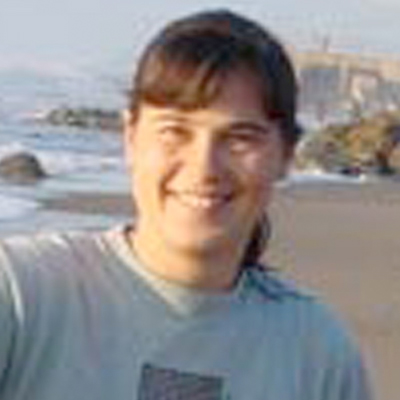Context aware computing systems for effective energy management
Imagine walking into a dark room, and it’s not just that the lights come on but the temperature also changes. Augmenting the environment around you will not only enhance user experience, but also help conserve energy. Therefore, energy consumption is a critical constraint in the design of modern computer systems. Dr. Tajana Rosing, with her System Energy Efficiency Lab (SEELab) at the University of California, San Diego, is addressing energy efficiency in systems of all sizes, from sensor nodes to data centers, transport networks, and power grids, as generating and processing information start to encompass several computing domains. SEELab research includes efficient distributed data collection and aggregation to processing and adapting to this data in smart cities, data centers, and the distributed smart grid.
As consumer sensing and data are migrating to a new concept due to the growth in consumer devices that are operating their own infrastructure, researchers at SEELab find it important to assess the infrastructure and motivate useful actuations. At SEELab, an entire group of researchers is dedicated to working on mobile and embedded systems in wireless sensor and networks, focused on optimizing performance in the design process of the systems with limited energy sources. Ultimately, Dr. Rosing hopes to facilitate excellent user experience while maximizing efficiency of embedded devices, as well as provide sensing data and user information. Other researchers at the lab can then quantify and classify data and turn them into useful information relevant to applications that need them using context and semantic ontology, and develop algorithms that can facilitate user preference, energy management, and grid efficiency.
Energy efficiency problems take different forms depending on the scale, from a single house to a microgrid with hundreds of buildings, to a large scale grid serving millions. Within a residential house, SEELab investigates controlling and predicting appliances, HVAC, lighting and other sensors, which play a critical role in energy efficiency of the house and its relation to the grid. On a larger scale, as part of one of the best and most unique microgrids in the US, SEELab researches the energy consumption of home automation; distributed generation with high variance; energy storage selection; electric vehicles; and load-flow control problems on the microgrid scale and beyond.
Current projects include:
- Smart Cities
- Distributed, Hierarchical Grid Control: The classical power grid has a centralized structure, with well-behaved and predictable consumers on the load side and high inertia constant output power plants on the generator side. The smart grid involves the integration of renewables, storage, and distributed, disaggregated generation with the growing data about the usage behavior and patterns of the individual elements. To address these emerging needs, her team introduces distributed control algorithms that can leverage this context available in the grid for more efficient operation.
- Context Aware Computing: The growing amount of heterogeneous data that is collected by the Internet of Things (IoT) provides opportunities for efficiency and enhanced usability through context-aware computing. Learning and training user and device models allow prediction of behavior, device characteristics, and impact on dependent objects. User models allow the team to simulate the needs and interactions of humans with their physical and virtual world. For smart cities, these energy predictions enable intelligent actuaion and automation for demand-response.
- Scalability and Complexity: The rapidly growing number and scope of Internet of Things sensing and actuation devices precludes a monolithic application development approach: individual applications cannot scale to millions of devices without substantial recreation and redeployment. The lab develops an architectural framework with provable scalability and complexity constraints, with modularity for IoT-scale deployment.
- Mobile System on Chips (SoCs)
- Variability and Reliability: CMOS technology scaling determines a higher impact of degradation mechanisms on IC and increased variability in power consumption and performance. Since counteracting with increased design margins is costly, they develop strategies to manage reliability and variability at runtime, while dealing with key requirements of mobile systems, such as user experience and the capability of working in different environments.
- Context Aware Mobile Framework: Mobiles are severly limited by battery lifetime, but the way each consumer device uses its power varies according to the habits of its user. Their work is on a user activity recognition framework that exposes how exactly the underlying hardware esponds to interactive mobile applications. From this, they can identify optimization opportunities and design effective power and thermal management policies that adapt system settings to user activity changes.
Bio
Dr. Tajana Šimunić Rosing is a Professor, a holder of the Fatamico Endowed Chair, and a director of System Energy Efficiency Lab at UCSD. She is currently heading the effort in smart cities as a part of DARPA and industry funded TerraSwarm center. During 2009-2012, she led the energy efficient datacenters theme as a part of the MuSyC center. Her research interests are energy efficient computing, embedded and distributed systems. Prior to this she was a full time researcher at HP Labs while serving as leading research part-time at Stanford University. She completed her Ph.D. in 2001 at Stanford University, concurrently with her Masters in Engineering Management. Her Ph.D. topic was Dynamic Management of Power Consumption. Prior to pursuing the Ph.D., she worked as a Senior Design Engineer at Altera Corporation.
Researchers at the SEELab are entirely collaborative and extremely talented, encouraging collaboration across the different disciplines they are involved in. Discussing ideas and issues closely allows them to see problems from multi-perspectives, engaging researchers in the individual sensing devices and embedded devices all the way up to the data centers who are processing information that are concerned with scalability and reliability requirements.
For more information, visit http://seelab.ucsd.edu/


